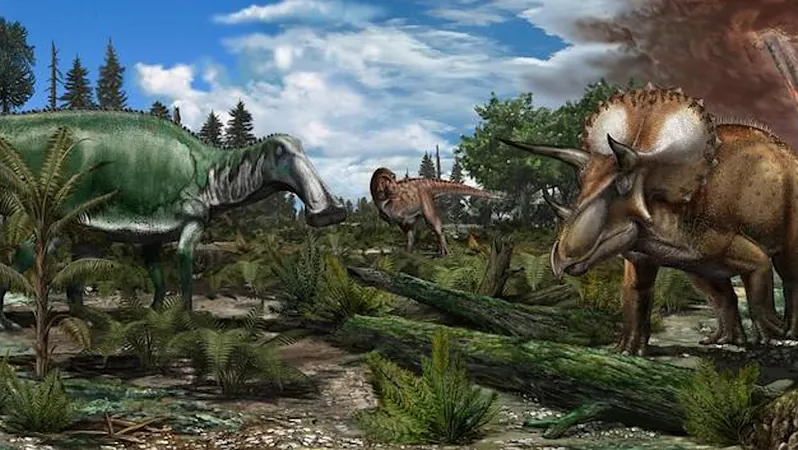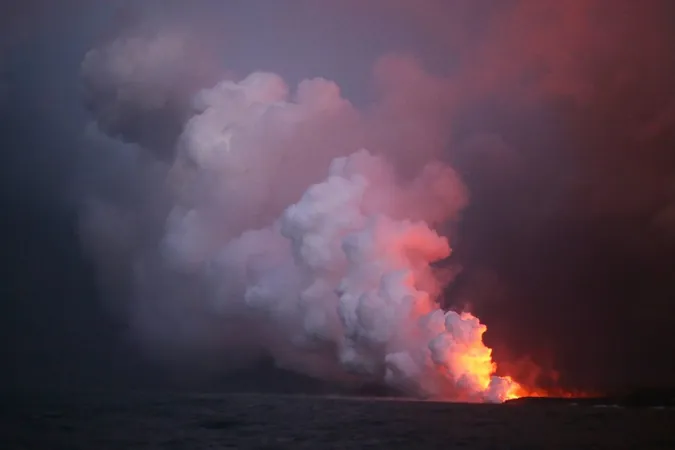
New Study Challenges Beliefs About Dinosaur Decline Before Asteroid Impact
2025-04-10
Author: Li
Did Dinosaurs Really Decline Before the Asteroid?
A groundbreaking study led by UCL researchers has reignited the debate on whether dinosaurs were in decline prior to the infamous asteroid strike that marked the end of their reign 66 million years ago. The findings, published in *Current Biology*, suggest that the perceived drop in dinosaur diversity may be more about the limitations of the fossil record than a true decrease in species.
Fossil Analysis Reveals Surprises
Analyzing over 8,000 fossils from North America, the researchers focused on the 18 million years leading up to the asteroid event at the close of the Cretaceous period. Initial interpretations indicated a peak in dinosaur diversity around 75 million years ago, followed by a decline. However, the UCL team found that the fossil record from this era is less reliable. As certain rock formations became less accessible, the chances of discovering dinosaur fossils decreased, casting doubt on previous conclusions.
Quality Over Quantity: The Real Story
Dr. Chris Dean, the lead author of the study, expressed that the notion of dinosaurs being on an unavoidable path to extinction before the asteroid may need to be reconsidered. "We discovered that the fossil quality for four distinct dinosaur groups deteriorated during the last six million years before the asteroid hit, obscuring a more robust presence of these animals than previously thought," he explained.
Spotlight on Four Dinosaur Clades
The study examined four notable dinosaur clades: Ankylosauridae (armoured herbivores), Ceratopsidae (like Triceratops), Hadrosauridae (duck-billed types), and Tyrannosauridae (the fearsome T. Rex). By employing occupancy modeling, a technique drawn from ecological studies, the researchers improved the accuracy of estimating dinosaur habitation across diverse terrains and time periods.
Setting the Stage: Environmental Changes
The researchers discovered that, throughout the Cretaceous, the area inhabited by these dinosaur groups remained stable, implying a consistent risk of extinction. Notably, they found that the likelihood of detecting fossils decreased markedly as geological changes limited accessible rock locations.
A Closer Look at Ceratopsians
Interestingly, Ceratopsian dinosaurs, particularly Triceratops, showed a resurgence in detection later in the timeline. This is thought to be linked to their preference for plains that avoided river systems, a habitat that became more prevalent as an inland sea retreated, further complicating previous notions of dinosaur decline.
Redefining Dinosaur History
Co-author Dr. Alessandro Chiarenza emphasized that the apparent downward trend in dinosaur diversity could primarily result from a limited fossil sampling rather than biological extinction processes. "If it weren't for the asteroid, dinosaurs might still share the Earth with contemporary mammals and birds," he stated.
This research not only sheds light on the complexities of the dinosaur extinction narrative but also urges us to reconsider how geological changes influence our understanding of prehistoric life.

 Brasil (PT)
Brasil (PT)
 Canada (EN)
Canada (EN)
 Chile (ES)
Chile (ES)
 Česko (CS)
Česko (CS)
 대한민국 (KO)
대한민국 (KO)
 España (ES)
España (ES)
 France (FR)
France (FR)
 Hong Kong (EN)
Hong Kong (EN)
 Italia (IT)
Italia (IT)
 日本 (JA)
日本 (JA)
 Magyarország (HU)
Magyarország (HU)
 Norge (NO)
Norge (NO)
 Polska (PL)
Polska (PL)
 Schweiz (DE)
Schweiz (DE)
 Singapore (EN)
Singapore (EN)
 Sverige (SV)
Sverige (SV)
 Suomi (FI)
Suomi (FI)
 Türkiye (TR)
Türkiye (TR)
 الإمارات العربية المتحدة (AR)
الإمارات العربية المتحدة (AR)